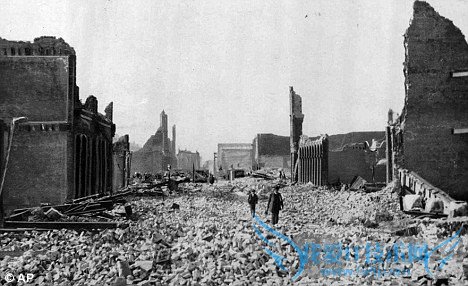��ӭ������52ijӢ��������������С��Ϊ�������Ӣ��֪ʶ�ǣ���ר�Ҿ��棺�������ݿ��ܷ�����һ�ε��𣡡�����������ϸ�ķ�����
ר�Ҿ��棺�������ݿ��ܷ�����һ�ε���

The U.S. West Coast could be the next area shaken by a big earthquake, experts warned today.ר�Ҿ���ƣ��������������ܳ�Ϊ��һ�δ����ķ����ء�
The earthquakes last Friday in Japan, last month in New Zealand and last year in Chile all happened along the ��Ring of Fire�� that encircles much of the Pacific Ocean. Scientists believe the West Coast could be hit as part of a cluster of earthquakes, with a Pacific Northwest fault having similar characteristics to the one underneath Japan. Experts can't be certain where or when the next earthquake will be but the West Coast risk has increased because it is in the same volatile geological system.��������ձ������ϸ��µ������������Լ�ȥ�����������ͳͳ�������ڻ�̫ƽ�������Ҳ������ν�ġ�����Ȧ���ϡ���ѧ�����������������п��ܳ�Ϊϵ�е��������֮һ���ر�������̫ƽ�����ֺ��ձ��������Ƶĵ��ʶϲ�ṹ��ר�Ҳ�����ȷ���´ε����ں�ʱ���εط�����������������������ͬ�ĵ������졢��������ķ������ߡ�
��The Pacific Northwest - what we call the Cascadia Subduction Zone - has the same kind of characteristics as the fault beneath Japan,�� seismologist James Gaherty told CBS. ��We're worried about a large subduction zone similar to Japan,�� Mr Gaherty, of the Lamont Research Center at Columbia University, told CBS.���ױ��Ǵ�ѧ���ɵ��о����ĵĵ���ѧ��James Gaherty����CBS����˵����̫ƽ��Ķ��������������dz�Ϊ�������Ƕϲ�������˴��Ķϲ�ṹ���ձ��ر��µĶϲ���ͬһ�֡����ǵ�������Ļ�������ձ�Ҳ�dz����ơ���
The Ring of Fire is a chain of large faults associated with the Pacific plate��s interaction with surrounding plates, which can produce earthquakes and volcanoes.��ν�ġ�����Ȧ����һ�����͵��ʶϲ㣬�γ���̫ƽ�����������齻�紦�����ڵ��ʻƵ���������µ���ͻ�ɽ��
��If you think of the Pacific plate as a square, we have had a major earthquake in the Northwestern side of that square (in Japan),�� author Simon Winchester told MSNBC. ��On February 22 we had Christchurch in New Zealand in the Southwest of the square. Last year we had a major earthquake in Chile in the Southeast of that square.����Simon Winchester����MSNBC���߳ƣ�������������̫ƽ���鿴����һ��������ô��Ҫ�ĵ��������������֣�Ҳ�����ձ���2��22�գ��������ϲ��ֵ������������Ƿ������𣬶�ȥ�꣬�����ϵ�����Ҳ�����˵��𡣡�
��The fourth leg of the square, the fourth side, is where the San Andreas and the Cascadia forms. That hasn't ruptured - if either (does) there could be major problems.��������ĵ��ĸ��ǣ�Ҳ����ʥ������˹�Ϳ����Ƕϲ�������ڴ���Ŀǰ���ǻ�û�ж��ѡ�������һ�����ѣ����п�����ɾ�����⡣��

��1906����ݵ�������
The last time California��s San Andreas Fault ruptured was in 1906, when the area of San Francisco was devastated by an earthquake and fires. ��California has significant risk - the San Andreas Fault,' he said. '(But) California, we're not going to get a big tsunami producing event. Pacific Northwest, we might.����һ�μ��ݸõ���������������1906�꣬�����ɽ�ɽ������ͻ�����Ϊƽ�ء�Simon Winchester˵�������ݵķ��պܸߣ��ʹ���ʥ������˹�ϲ��ϡ������ڼ��ݼ�������Ҳ��̫���ܷ�����Х��������̫ƽ����������Ҳ�����ձ����Ͳ�һ���ˡ���
- �����б����������۽������ѱ�����˿���������������վͬ����۵��֤ʵ��������
-
